#microlecture
Explore tagged Tumblr posts
Text
Online lectures - how to make them great
Check out the resources here https://teachinginhighered.com/podcast/how-to-create-engaging-microlectures/
0 notes
Text
🍊 wednesday log | 24.03.2021 🍊
- woke up at 7:30am, sadly later than i hoped but still in time to start studying early!!!
- watched two microlectures + read an article for my lecture tomorrow
- had a very productive meeting with my project group
- went to uni to practice for my cpr exam on friday!!!!
- cycled for an hour in the afternoon
- had vegan tikka masala with my boyfriend for dinner while watching terrace house 💌
- reached a 95 day streak with duolingo!!!! pretty proud of myself 😌
- looking over some notes before bed for my exam on monday!
3 notes
·
View notes
Text
Doing and Undergoing: An Inquiry in Process
For this inquiry, I asked “What happens when I attend to process as I think about jewelry-making as researching?” To answer, I read; thought about how material, theory, and research method/ology become-together in the “doing...and undergoing” of art (Coemans, Vandenabeele & Hannes, 2019); memoed; made jewelry; and mapped. The result--four jewelry pieces and a map--are reflective and analytic representations of my evolving understanding. Their significance is largely personal: they portray my voyage so far in embracing process and experimenting with what research and my art-making could become.
The first piece, Thirdness, explores Manning & Massumi’s (2014, p. 56) concept of the third, the theory that an “inexpressable thirdness” results from the merging of two entities. As I threaded two wires in and out, I played with how two could become three. How, when allowed to become-together, jewelry-making and research produce something in excess of either. The second piece, Flight, is borne from the material conditions of this-place-in-time-and-space during COVID-19, when I was forced to look outside (literally and metaphorically) for materials to use in making jewelry. As I made, the winged seed evoked an idea, embodying the “liveliness” (Myers, 2017, p. 4) of matter whereby an art/object exceeds its boundaries, becoming event and co-producer (Goulish [2000] in Adams & Holman-Jones, 2017/2019). The third piece, (It’s a) Necklace playfully explores the boundaries of what jewelry is/could be. If we typically recognize jewelry by its content (e.g., gemstones), what would it mean to instead recognize jewelry by the process of its making? As I rolled, folded and glued, I asked what such a process-oriented ontology may open up for my jewelry/research. The fourth and final piece, Collective happening, experiments with the process and potentials of making-together. Initially, I planned an unfinished piece with an invitation for participation. Instead, 31 people provided 31 actions and materials from lists of possibilities. I assembled the piece from these directions.
The last component of the inquiry is a map that documents the journey through this inquiry. It includes ideas that I took up, sketches, and paths that I tried before abandoning. In this way, it functions as a collage: a bricolage with no entry-point (Scotti & Chilton, 2017/2019), providing the viewer the opportunity to wander the landscape of fragments and make connections across ideas and artifacts. In this way, it prolongs the process, inviting the viewer to continue the thinking-making of the research.
#carlsonhcoogler #artsbasedresearch #artsinquiry #jewelry #art #covid19
Adams, T. E. & Holman Jones, S. (2019). The art of ethnography. In P. Leavy (Ed.) Handbook of arts-based research (pp. 141-164). (Original work published 2017).
Coemans, S., Vandenabeele, J., & Hannes, K. (2019). Making sense of a changing neighborhood: Art students’
experiences of place explored through a material-discursive analytical lens. Art/Research International: A Transdisciplinary Journal, 4(2), 505-534.
Goulish, M. (2002). 39 microlectures: in proximity of performance. Routledge.
Manning, E., & Massumi, B. (2014). Thought in the Act: Passages in the Ecology of Experience. U of Minnesota Press.
Myers, N. (2017). Ungrid-able ecologies: decolonizing the ecological sensorium in a 10,000 year-old naturalcultural happening. Catalyst: Feminism, Theory, Technoscience, 3(2), 1-24.
Scotti, V., & Chilton, G. (2019). Collage as arts-based research. In P. Leavy (Ed.) Handbook of arts-based research (pp. 355-376). (Original work published 2017).
1 note
·
View note
Photo

We also did a #microlecture for our online management course. Once @okgo video is available we are going to create a #TED_Ed lesson for management courses. #DrLepervancheCampus. Lessons after #TEDCinema. Today in class we shared how @okgo find great ideas, craft great plans, and master execution. #tedxfscjlearningadventures continue during #TED2017 week. #management #operationsmanagement #planning #execution #okgo (at Florida State College At Jacksonville Centers)
#drlepervanchecampus#planning#management#okgo#execution#ted2017#ted_ed#tedcinema#microlecture#operationsmanagement#tedxfscjlearningadventures
0 notes
Text
Microlectures 101: What, Why, & How? | Faculty Focus
See on Scoop.it - Education 2.0 & 3.0
Microlectures have three key characteristics: they are brief, personal, and interactive.
0 notes
Text
Online learning is so prevalent in the world today that I question if it is in fact still a trend. It is so ingrained in our world that it is simply our reality now. In considering this I chose to discuss a trend within the trend of online learning and that is the use of Microlectures. These are short video or audio presentations that focus on a specific topic. My first introduction to this medium was in my PIDP course where the instructor used them to outline assignments and provide a bit more detail, direction and clarity. I personally found this to be very helpful as I created my work plans and collected research materials. I would frequently refer back to video for clarity and to make sure I was still on track. I realized immediately that this was something I could incorporate into my own instructor tool box. I found an article online that researched the use of Microlectures in a flipped classroom. The research shows the benefits for students are they are able to work at there own level and pace, review content whenever they wanted and reference it in the future to help prepare for exams. It has also been shown to create better student engagement, more independent interaction with the course content which has been shown to improve the quality of their learning. For instructors it can help students be more prepared for in-class activities, bridging the gap between what is know and what is to be learned. It can also help to increase class time dedicated to activities with which students may need more direct and hands on help. The article stresses the importance of the effective application of Microlectures. They are most effective when used to provide very specific information on a topic in preparation for a new skill or project or discussion that will be taught in class, as opposed to replacing lectures altogether. To be able to effectively incorporate this trend into my classroom I will need to look at the content of the courses I teach and see where it can be effectively applied, then work backwards from my learning objectives to create a plan and a script. I will also have to work on becoming a bit more media savvy, which might very well be an opportunity for my students to teach me! This article included a great outline for creating Microlecture for anyone interested.
https://www.mwera.org/MWER/volumes/v26/issue1/v26n1-Street-BOOK-MEDIA-REVIEWS.pdf
0 notes
Photo

Yo! Asia AND Africa???? As part of VCFA’s Spring Art + Connection special events, we are extremely excited for the upcoming presentation: Graphic Design Global Studio Sessions! When: Wednesday, June 2nd Where: Registration link for the presentation in @vcfaedu bio. Get a glimpse into the practices and realities of designers based in Africa and Asia with two sets of microlectures and Q&A with faculty members Sereina Rothenberger @hammer__ & Ian Lynam @ianlynam You’ll hear from this amazing group of designers, illustrators, educators, historians, photographers, and more!: Ngadi Smart (Abidjan/London) @ngadismart ,Jamal Nxedlana (Johannesburg) @jamalaun ,Malick Kebe (Abidjan) @from_abidjan ,James Chae (Seoul) @drchae ,Kaitlin Chan (Hong Kong) @kaitlinmchan ,& Sakura Nomiyama (Tokyo) @nmymskr Image Accessibility: A grid of six designs, illustrations, textiles, and photographs by the Global Studio Sessions presenters. Upper Left-Sakura Nomiyama, Upper Middle-James Chae, Upper Right-Kaitlin Chan, Lower Left-Malick Kebe, Lower Middle-Jamal Nxedlana, Lower Right-Ngadi Smart • • • • • #globalstudio #globalstudiosessions #globaldesigners #graphicdesigner #graphicdesign #graphicdesignwriting #graphicdesignschool #graphicdesigneducation #graphicdesignhistory #contemporarydesign #contemporaryart #design #illustration #artanddesign #africandesigners #asiandesigner #photography #mixedmedia #designpractice #mfagraphicdesign #microlectures #vcfadesign #vcfa #vcfaedu #studiosessions #artandconnection #vcfaalumnx #vcfagraphicdesign #vcfamily #vcfalove (at Tokyo, Japan) https://www.instagram.com/p/CPbDPnLhHad/?utm_medium=tumblr
#globalstudio#globalstudiosessions#globaldesigners#graphicdesigner#graphicdesign#graphicdesignwriting#graphicdesignschool#graphicdesigneducation#graphicdesignhistory#contemporarydesign#contemporaryart#design#illustration#artanddesign#africandesigners#asiandesigner#photography#mixedmedia#designpractice#mfagraphicdesign#microlectures#vcfadesign#vcfa#vcfaedu#studiosessions#artandconnection#vcfaalumnx#vcfagraphicdesign#vcfamily#vcfalove
1 note
·
View note
Text
Mango Animate CM Helps Build 2D Animation Characters for Microlectures
Mango Animate CM Helps Build 2D Animation Characters for Microlectures
Hong Kong, China — (Senmer News Wire) — 02/04/2021 –Mango Animate has released its exciting new software, Mango Animate Character Maker, by which users can build 2D animation characters in just minutes. This animation tool is excellent for instructors interested in condensing a subject or topic into an attractive and informative microlecture. Mango Animate CM is also perfect for those looking to…
View On WordPress
#Best press release distribution service#Senmer News wire#senmer Press Release service#White Label Press Release
0 notes
Photo

Vertical Neuroscience with Corey Fernandez http://ehelpdesk.tk/wp-content/uploads/2020/02/logo-header.png [ad_1] Hear from Corey Fernandez, PhD '... #alumni #association #confidence #emotionalintelligence #energyhealing #gradalumniday #leadership #learningstrategies #lifecoaching #memory #microlecture #mindfulness #neuro-linguisticprogramming #neuroscience #parenting #personaldevelopment #personalproductivity #publicspeaking #reiki #saa #speedreading #stanford #stocktrading #technicalanalysis #university
0 notes
Text
Delcourt Group Bought French Rights of Fifteen Graphic Novels Adapted from Liu Cixin’s Works
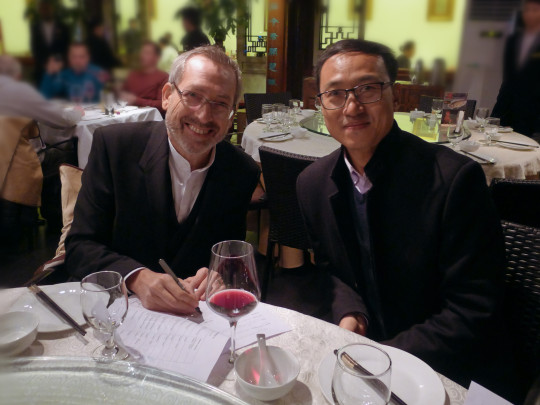
On November 19th Beijing time, FT Culture (Beijing) Co., Ltd. (FT Culture) and Delcourt Group concluded a deal for French rights of fifteen graphic novels. The whole collection is adapted from works of Hugo-Award-winning author Liu Cixin and created by twenty-eight comic artists from nine countries, including China, France, America, Italy, Spain, and Argentina etc. It will be published successively from 2020 to 2021.
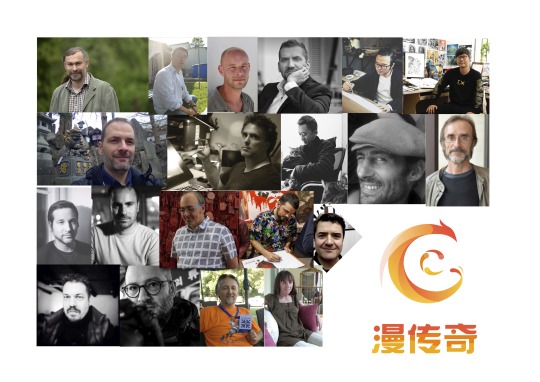
Established in 1986, Delcourt Group is the leading independent publisher of French-language comics. Today it has built up an extensive collection of more than 9,500 titles, including Franco-Belgian comics, Children's comics, US comics, Mangas, and so on.
The series of graphic novels will be completed by the end of June 2021, and presented to readers at home and abroad in various forms such as graphic novels, Online reading, animix /motion comics, cultural products, and microlecture.
It took almost four years and one million Euro in investment for FT Culture to carry out this big project. With the imagination and creativity of many great international masters of graphic novels, these graphic novels are worth looking forward to.
All foreign rights are available except French. Sample pages of the first five works can be provides upon request.
About FT Culture
FT Culture is a company dedicated to uncovering and producing outstanding creative works from China,and to promoting these works around the world. We represent Chinese literary works,as well as produce graphic novels & comics. Most of our works have English and/or French translation.
For further information, please contact
Kelly Song Partner / Chief Operation Officer Kelly.Song(at)FT-Culture.com
Letty Guo Right Manager (North, East & Central Europe) Letty.Guo(at)FT-Culture.com
0 notes
Photo

We also did a #microlecture for our online management course. Once @okgo video is available we are going to create a #TED_Ed lesson for management courses. #DrLepervancheCampus. Lessons after #TEDCinema. Today in class we shared how @okgo find great ideas, craft great plans, and master execution. #tedxfscjlearningadventures continue during #TED2017 week. #management #operationsmanagement #planning #execution #okgo (at Florida State College At Jacksonville Centers)
#management#okgo#microlecture#execution#planning#ted2017#operationsmanagement#drlepervanchecampus#tedcinema#ted_ed#tedxfscjlearningadventures
0 notes
Text
Microlectures 101: What, Why, & How? | Faculty Focus
See on Scoop.it - Education 2.0 & 3.0
Microlectures have three key characteristics: they are brief, personal, and interactive.
0 notes
Text
Brièveté
Les pratiques du microblogage induisent inévitablement des formes brèves. Rappelant la glorification de la vitesse dans la société moderne, la croissance de la brièveté est peu étonnante. La vie actuelle exige un rythme de lecture effréné, des lectures rapides qui s’insèrent parfaitement dans nos modes de vie, afin de lutter contre ces courts moments de lassitude. Les habitudes de lecture ont changé depuis l’avènement du numérique. Le volume d’informations circulant dans notre réseau est vertigineux et nous balayons davantage les textes au détriment d’une lecture rigoureuse. L’avènement de la « twittérature » en 2008 explique sans conteste ce phénomène. Or, ces « microlectures » ne datent pas d’hier. Elles se manifestent depuis de nombreuses décennies dans l’histoire littéraire. L’épigramme, la maxime, le proverbe, le haïku et l’anecdote notamment se rapportent tous aux formes brèves. Plus récemment, les graffitis et les slogans concourent également à la variété du discours bref. Le nombre de signes verbaux devant être réduit, la brièveté fait appel à certains procédés stylistiques, tels que l’ellipse et l’affinage de la langue. Tout de même, ces publications en courtes séquences ne sont pas synonymes de désintérêt. Malgré sa contrainte évidente, la brièveté offre également de nombreuses possibilités créatrices. En effet, les « twittérateurs » ont démontré que tous les genres littéraires peuvent s’accommoder de cette concision. L’écrivain François Vinsot s’articule à créer un roman sur Twitter, Roman sans titre, à coup de 280 caractères à la fois. Lirina Bloom a quant à elle écrit un texte de théâtre sur Twitter, 140 manières de mourir en 140 caractères. Le journaliste au DevoirFabien Deglise a d’ailleurs lancé un défi à vingt-cinq auteurs québécois, français et marocains, soit d’imager une nouvelle écrite en 140 caractères seulement. Catherine Mavrikakis, Michel Tremblay, Jacques Godbout et Nicolas Dickner se sont notamment prêtés à l’exercice, dont le résultat est d’ailleurs téléchargeable gratuitement sur Apple Books : https://itunes.apple.com/fr/book/25-histoires-25-auteurs-en-140-ca-version-illustrée/id708756227
1 note
·
View note
Text
Fall 2017: Week 6
blog post by ann (SFPC 2017)
It was yet another packed week for SFPC students as they enter the home stretch of the program. Students learned about loading and creating images in openFrameworks with Zach Lieberman, discussed privacy with Morehshin Allahyari and guest speaker Sarah Aoun, got their first taste of Arduino with Pam Liou, looked at computer generated books with Nick Montfort and still managed to squeeze in a microlecture by artist-in-residence Golan Levin, a lecture on Origami by TA Robby Kraft, and a sushi making dinner led by student Colin Wang! Phew!
Day 1: Images, Mosaics, and Ken Knowlton
Students started their week by discussing the programs they wrote exploring typography and repetition for the previous week’s homework.
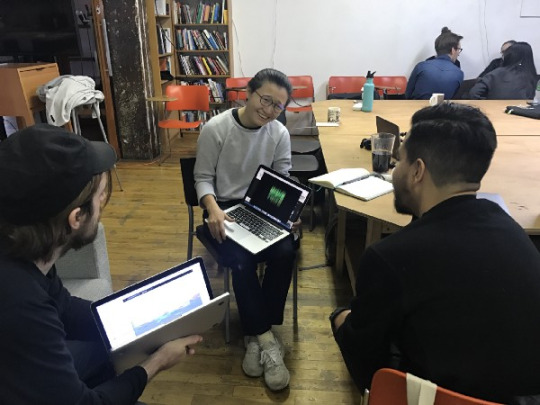
Next, Zach gave lecture on artist and computer graphics pioneer Ken Knowlton. In 1963 while at Bell Labs, Knowlton developed a program called BEFLIX (Bell Flicks) that generated animated films using bitmap images. During his time at Bell, he worked closely with artists such as Stan VanDerBeek — using the BEFLIX to create Poemfields — and Lillian Schwartz — creating Pixillation with another Knowlton language called EXPLOR.
However, Knowlton is perhaps best known for his mosaic portraits, which use objects, images, or letters as tesserae.
To create his portrait mosaics, Knowlton developed an algorithm that would analyze the color and pattern of a given object and match it to a target image, and produce a mapping of tessera to his desired final image.
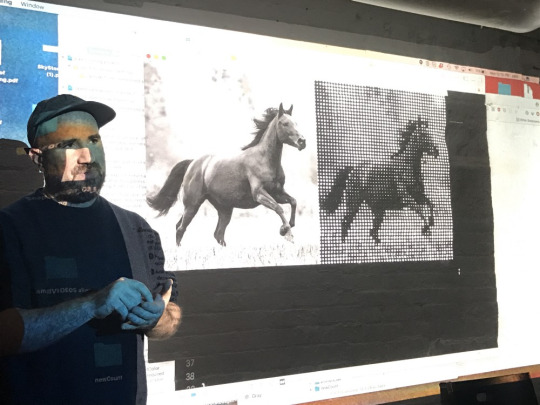
Zach used Knowlton’s work as a jumping off point to demonstrate loading and generating images in openFrameworks. In the image below, Zach maps the brightness of every tenth pixel in the original image (left) to the radius of a circle in the computer generated image (right).
Day 2: Privacy and Surveillance and Guest Speaker Sarah Aoun
Day 2 began with a lecture by guest speaker Sarah Aoun. Sarah is a data activist, operational security trainer, and programmer. Her work lies at the intersection of tech, human rights, and transformative justice. She’s collaborated with activists, journalists, grassroots social movements, and NGOs in the US and MENA region on digital security, ethical data & privacy, and data-driven storytelling. Sarah grew up in Lebanon and holds a B.A. in International Relations from Brown University.
Sarah talked about the history of surveillance and it’s roots in colonialism, empire, and the oppression of black and brown bodies. She discussed the origin of the fingerprint and how the first wide-scale use of the fingerprint was by the English in the mid-1800s on contracts made with locals in India. At the time, English colonists began requiring fingerprints on all contracts with locals not for any scientific purpose, but to “frighten [them] out of all thought of repudiating [their] signature.”
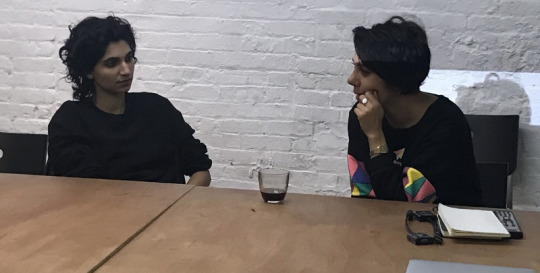
Sarah later talked about how surveillance is still closely tied to racism today. She discussed the use of floodlights in predominantly black neighborhoods in New York City, digital redlining on Facebook, and the problematic practice of predictive policing.
Later, two students, Kaitlin Schaer and Diego Salinas presented on the right to privacy and surveillance.
Day 3 (morning): Intro to Arduino
Day 3 was the students’ first class on Arduino with Pam Liou. Pam kicked things off with a lecture about microcontrollers. She explained that a microcontroller is a programmable chip. The Arduino is an open-source electronics platform that consists of a microcontroller (the hardware) and an IDE (integrated development environment — the software) that makes the chip easy to program and control.
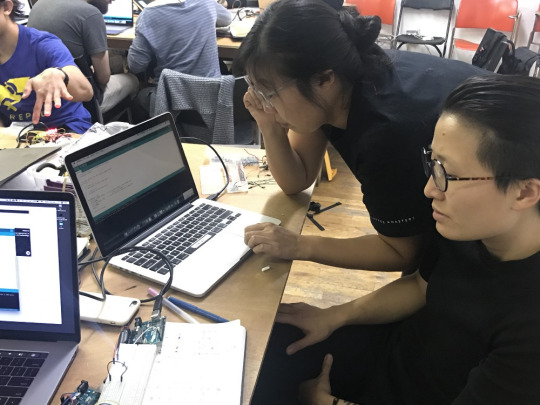
Pam also talked about how information is sent to and from a microcontroller. When data is sent between two devices, in order for the receiver to know when a unit of data begins and ends, the two devices must establish a synchronization protocol. In other words, thetwo devices must agree on how to read the stream of data.
Pam then discussed two ways that this can be accomplished:
When data is transferred “synchronously,” the sender sends a clock signal alongside the data. This means a special line for the clock signal is required.
When data is transferred “asynchronously,” the sender and receiver agree on a data transfer speed prior to data transfer, and sync their own internal systems accordingly. In order to ensure accuracy, the sender and receiver need to re-sync their clocks periodically during the data transfer process which can slow the rate of transfer.
“Like a murder of crows or a swarm of bees, there are a byte of bits.” — Pam Liou
Finally, Pam led the students in several different intro Arduino sketches. She began with a blinking LED (the “hello world” of hardware), and then got everyone set up with a node.js server to test out sending and receiving data to the Arudino from the web.
Day 3 (afternoon): Microlecture on springs with Golan Levin, Origami with Robby Kraft, and Family Dinner!
After class with Pam, Golan delivered a microlecture on springs. As part of his time as an artist-in-residence at SFPC, Golan Levin has been giving a series of microlectures on everything from interactivity to easing functions.
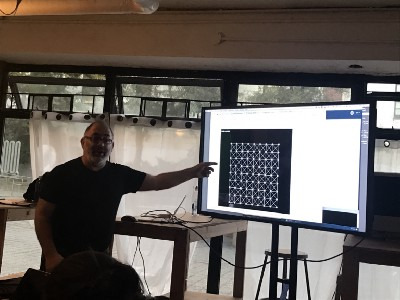
According to Golan, springs are the essential element of interactivity and lifelike movement. Springs are endlessly useful, and can be combined in various ways to produce almost any movement desired.
SFPC TA Robby Kraft also gave a mini-lecture about his origami program, which he also delivered at this year’s Strangeloop conference. He talked about the history of origami software, and his journey from expert origami folder to origami designer.
“If you don’t invent a new technique then what you’re making probably isn’t new.” — Philip Glass
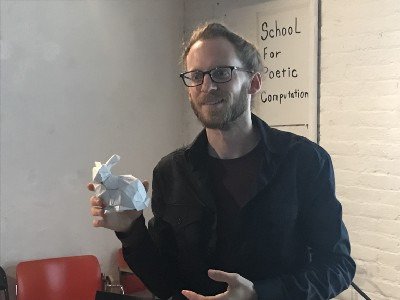
Lastly, SFPC student (and former sushi chef) Colin Wang taught students how to roll their own sushi. The results were delicious and didn’t last on the plate for very long!
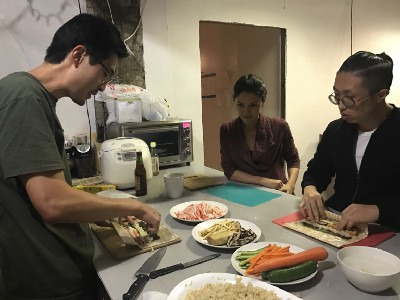
Day 4: Computer Generated Books
For their second code poetry class with Nick Montfort, students started by discussing 280-character python programs they had written for homework. Together, they discussed the purpose and meaning of the program, and refactored the code in realtime.
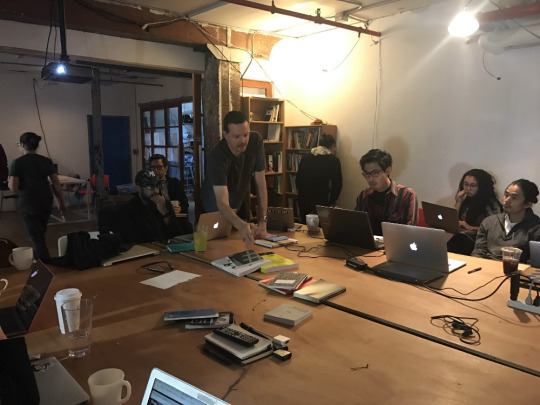
Next, Nick shared a selection of computer-generated books from his collection. Students broke off into small groups which were each given a single text to examine and discuss. After a few minutes, the class reconvened to share what they had discovered. Books ranged from Update by Bill Kennedy and Darren Wershler-Henry which scrapes Facebook status updates to generate fictional “statuses” for deceased poets, to Nick’s Autopia which arranges car names into surreal statements.
Bonus! Trip to MIT for Processing Day
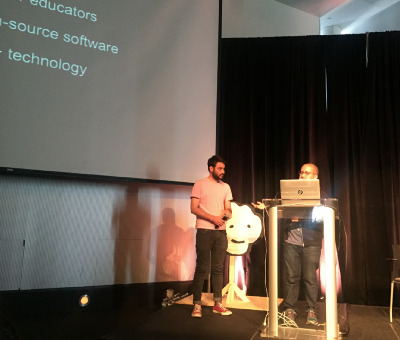
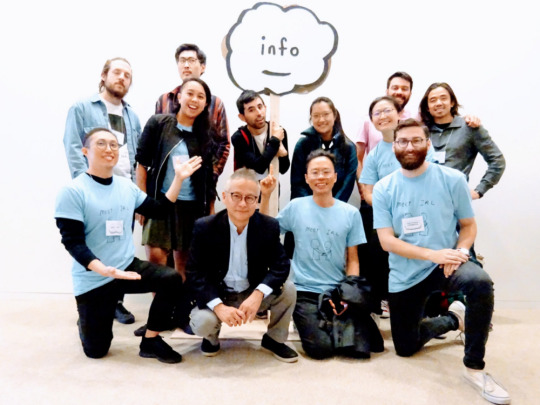
On Saturday October 21st, a group of students went to Processing Community Day at MIT Media Lab, organized by Taeyoon Choi. Among the presenters were Guillermo Montecinos, current student of SFPC.
And last but not least, more pictures and a video of Week 6 by Yumi Nishida!
vimeo
0 notes